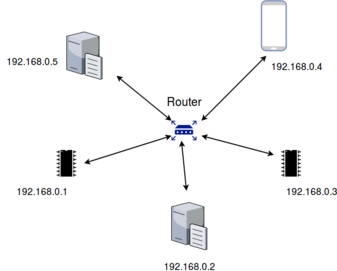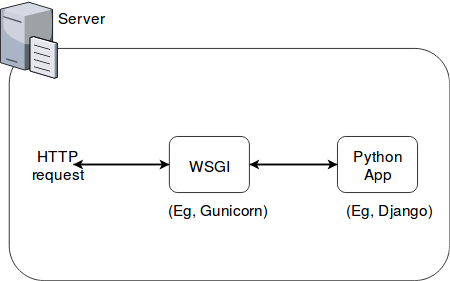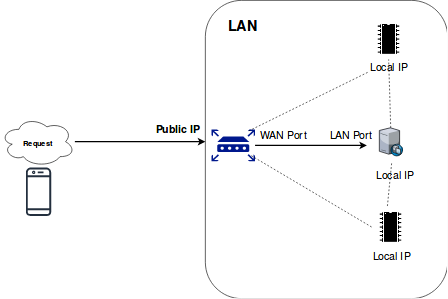Different devices and computers can be linked together through a router. A router is a device that directs data packets across the network.
It assigns an
IP address to every device connected to it. This address is
unique within the network and hence
it is called
local IP

In order for a computer to act as a
server, it should run a program that listens on one of it's network ports. For eg, if a computer with
local IP
192.168.0.2 is running a program that runs some complex computations and listens on
port 8005, then any other device in the network can access this
program by addressing
192.168.0.2:8005
The data transmission is managed by
network protocols like
HTTP, Websockets, FTP, SSH. The server should unpack the received data
according to relavant protocol and convert it to a form that can be processed by the programming language of your application. Almost all our needs under the
scope of our study can be achieved with HTTP or Websockets, each of which has a set of well-maintained libraries.For
HTTP, the program that forwards HTTP requests
to web applications or frameworks (eg Django) are called
Web Server Gateway Interface (eg Gunicorn, Mod WSGI)

Django
Django is a
production grade, open source python web framework which forms the main link to our ML programs. Django can interfaces with any kind of database and makes management of
webpages or APIs easy. Without a web framework, it would be extremely time consuming to build such applications.
Nginx
Several servers can run in a single machine. For eg, we may have one application for face recognigition, another application for pose estimation and yet another one for music recommendation
all running in one machine, but in isolated environments (
Docker). To
parallelize request handling to make our machine process concurrently as many requests as possible,
we use another reverse proxy server
Nginx (derieved from the word
Engine X)

Other web development stacks
One can also use
Apache web server instead of Nginx. But for our usecases, Nginx is cited to be more efficient (This scenario may change in the future).
People in the IT world generally use different terminologies to communicate the server stack they use. For eg,
- Using Linux, (E)Nginx, MySQL, Python is called LEMP stack
- If we use Apache instead of Nginx, we call it LAMP stack
- If our application requires more efficient database access, we can switch to production grade open source PostgresSQL database.
In such cases, the stack is called LEPP
- If anyone still use Windows instead of Linux, they call it WEMP
For this study, I will be sticking to
LEMP or LEPP. May be I ll touch upon
Apache just to for performance tests. Nevertheless,
if you can work on one stack, the others should just be a matter of adapting.
Processing requests from internet
Any device
outside the Local Area Network (LAN) can access the server only through the
gateway, which has a globally unique
public IP address. We should configure our modem to
forward the required ports to a host machine. Through this machine,
we can indirectly access other devices in the network. Otherwise, we can also configure the modem to forward a port separately to each device (this is rarely done and it is not secure).

If you are using a
private Internet service provider (ISP), they might block some of your WAN ports.
Moreover, you will be assigned only a
dynamic public IP, which keeps changing.
That means, when you map a domain name to your IP, you have to make sure that it is updated in regular intervals. I have described all these scenarios in the modules.
Sometimes, ISP does not even provide you a public IP! Because of shortage of IPv4 addresses, you will be sharing your public IP with other people.
In such cases, your modem will have an IP assigned in
RFC 1918 address space and you will have to talk with your ISP to forward a set
of ports to your modem.
Go back Modules





